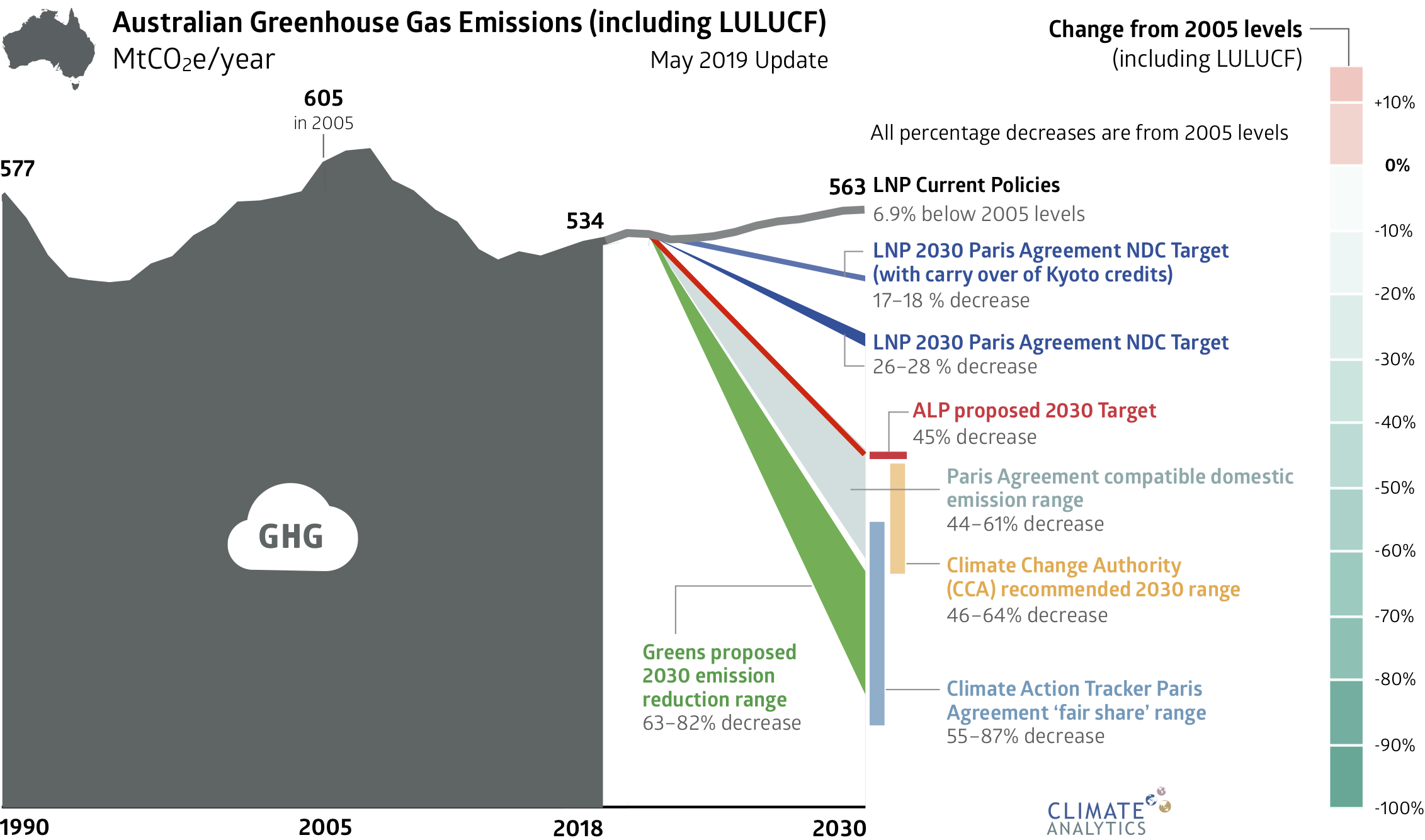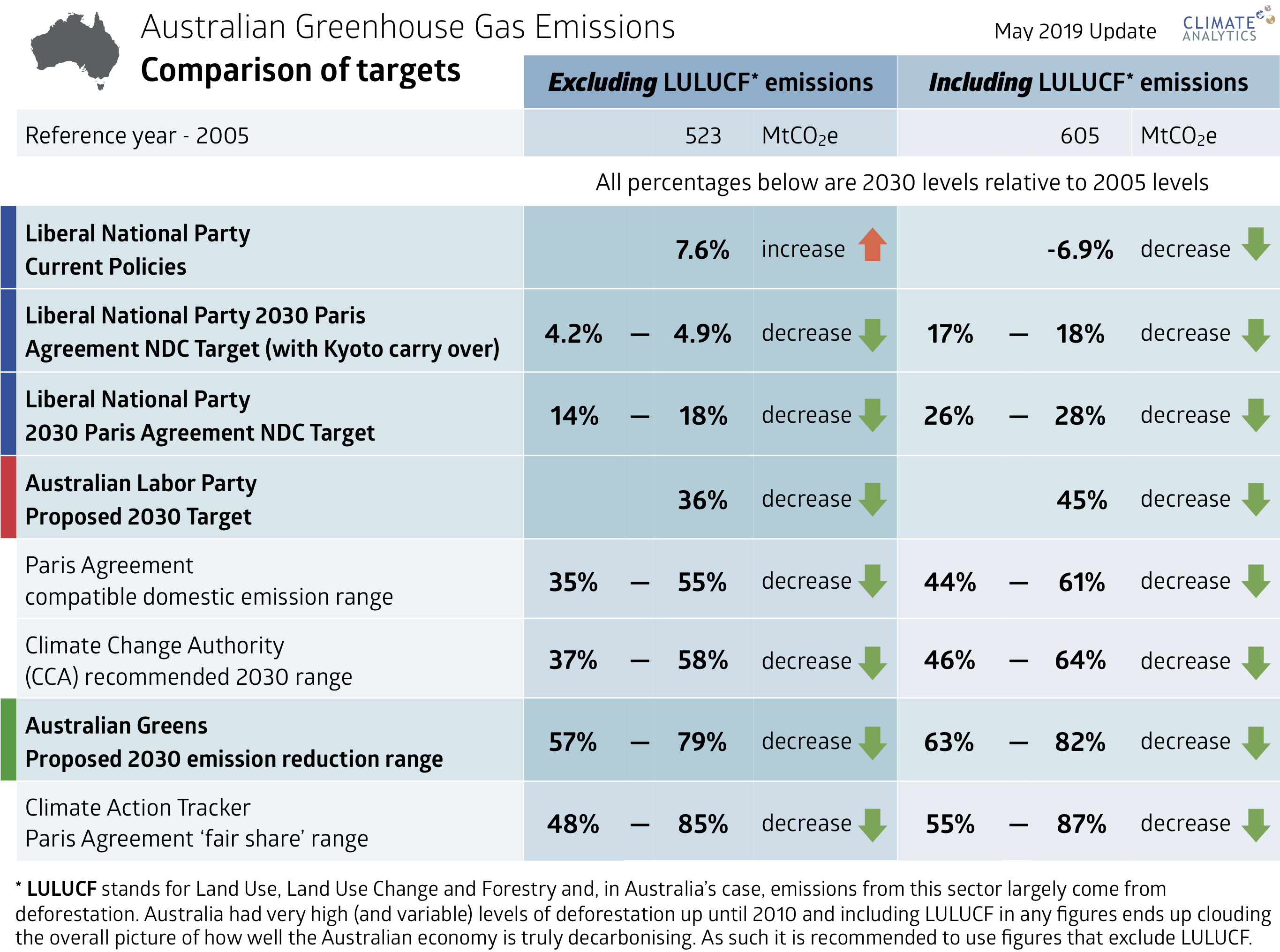Australian election: analysis of parties' climate change targets
Share

“We know that keeping warming to the Paris Agreement’s limit 1.5°C is critical to protecting Australia’s biodiversity, ecosystems, agricultural systems, and this means strong domestic emissions reduction targets by 2030,” said Bill Hare, Director of Climate Analytics.
“Australians have clearly identified climate change as the biggest threat to their country. This analysis will provide them with detailed information on how the parties compare on the key 2030 emission national emission reduction target.”
There are two key measures in the analysis:
- Are the parties’ domestic emission reduction targets consistent with the Paris Agreement?
- Are the parties’ policies/targets consistent with Australia’s “fair share” contribution to assisting other countries reducing their emissions, which are in addition to domestic emission reductions?
For wealthier countries such as Australia, the Paris Agreement “fair share” contribution (which can be measured in terms of national emission reduction targets) needs to be larger than a Paris Agreement domestic emission reduction target. Countries are typically contributing these “fair share” contributions to, for example the Green Climate Fund (GCF), and other bilateral activities to assist with climate action, all of which governments have agreed to scale up under the Paris Agreement
The Liberal National Coalition’s national reduction target (26-28% below 2005 levels by 2030) is very far away from Paris Agreement-compatible domestic emission reductions, and its determination to use so -called “carry over” units from the Kyoto Protocol means that, in effect, the Coalition domestic emission reduction target is only a 17-18% reduction below 2005 emissions levels.
On top of this the Coalition’s policies will lead to Australia’s emissions continuing to rise and there are no indications that further policies will be introduced. The Climate Action Tracker rates the Coalition target as “insufficient”. The Coalition government has announced it will not contribute to the GCF and has also cut foreign aid generally, which, in turn, is reducing resources for climate-related action in developing countries.
The Labor Party’s (ALP) national reduction target (45% below 2005 levels by 2030) is just within the Paris Agreement 1.5°C compatible range of domestic emission reductions for 2030. The ALP has rejected the use of “carry over” units from the Kyoto Protocol. To contribute to Australia’s “fair share” of global action the ALP’s national reduction target will need to be supplemented by commitments to international climate finance and/or a deeper reduction target, for Australia to contribute to emission reductions in poorer countries.
The Greens’ GHG emission reduction target is 63-82% below 2005 levels by 2030 and is within the “fair share” range in the scientific literature, and hence include both domestic emissions reductions consistent with the Paris Agreement and contributions to emission reductions in poorer countries. The Greens are also calling for zero greenhouse gas emissions by 2040, which is within the Paris Agreement 1.5˚C-compatible range for Australia as a developed country.


See Climate Analytics’ Factsheets (for the Australian Conservation Foundation) on Australia’s climate policies compared with Rest of World)
Contact:
Bill Hare (in Perth): +61 468 372 179 bill.hare@climateanalytics.org
Or Cindy Baxter (NZ) +64 21 772 661 cindybax@gmail.com











